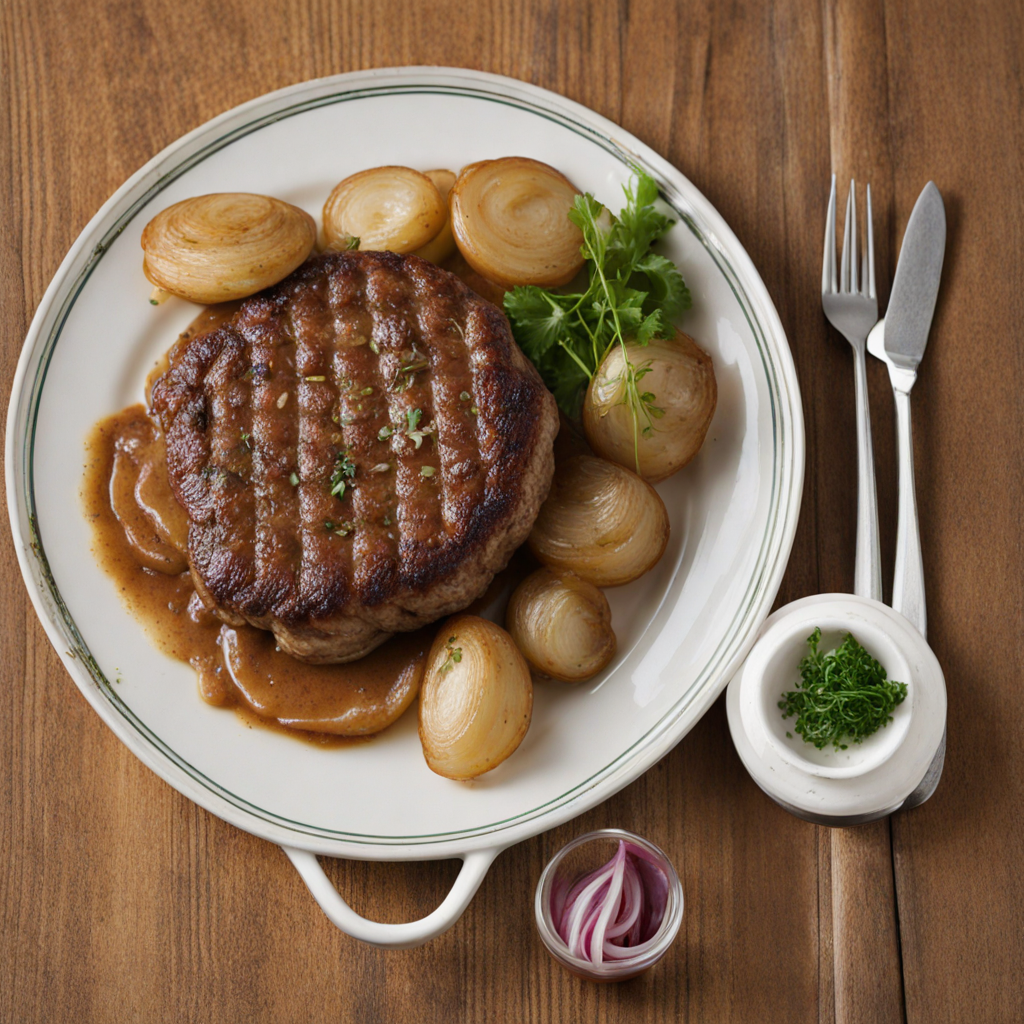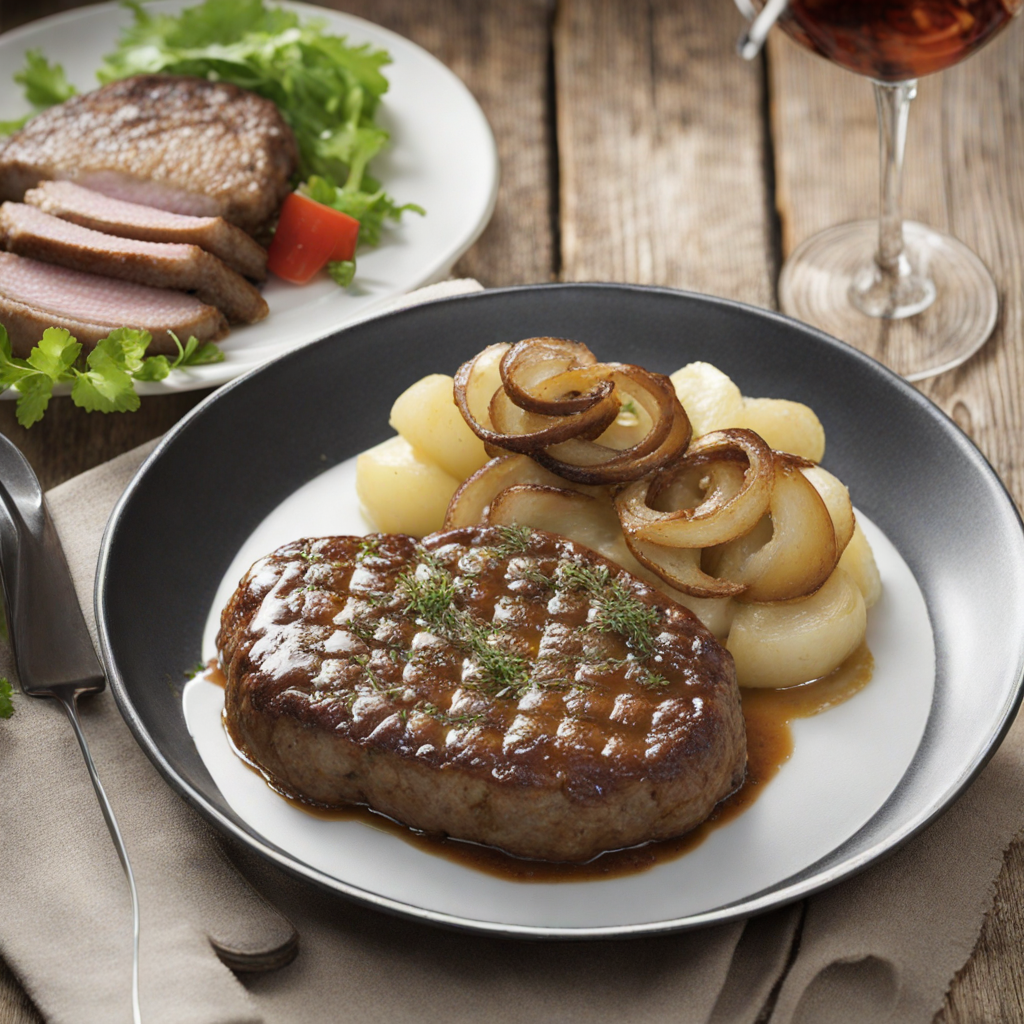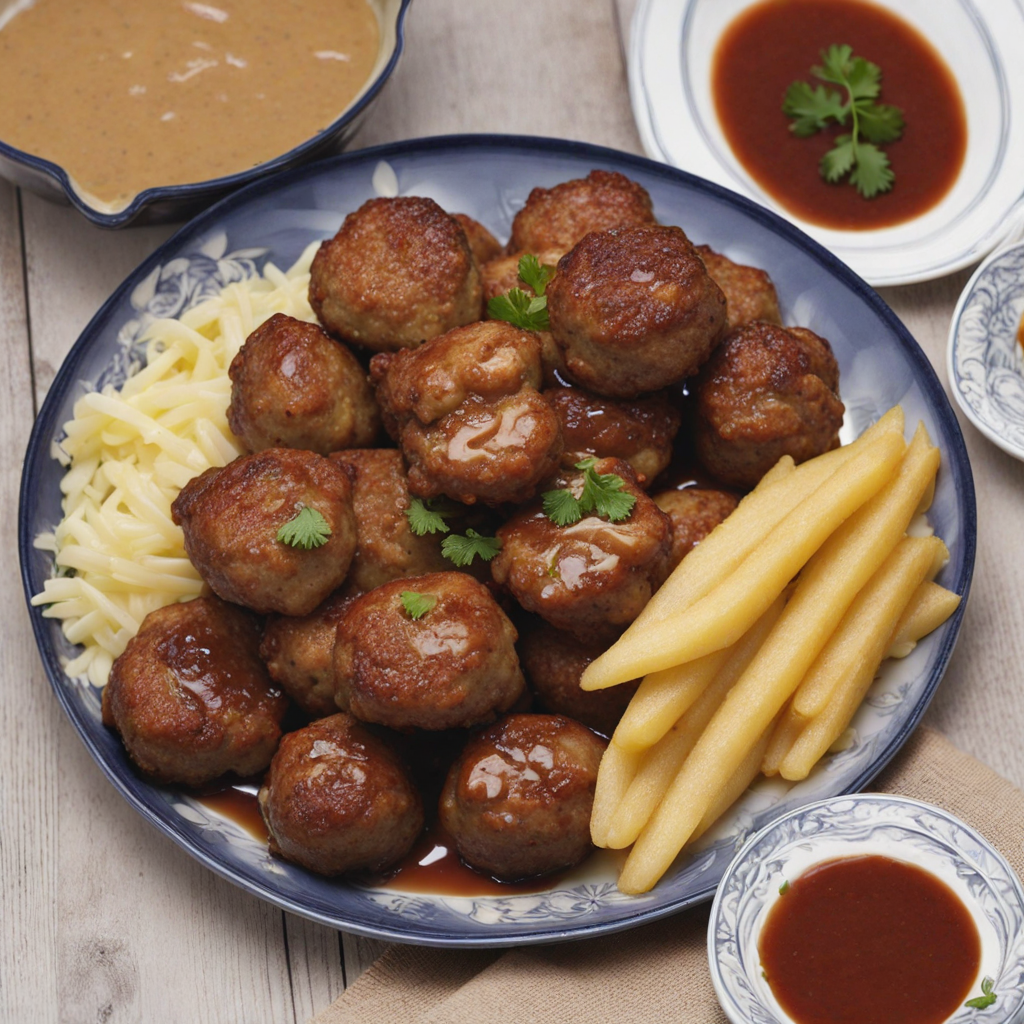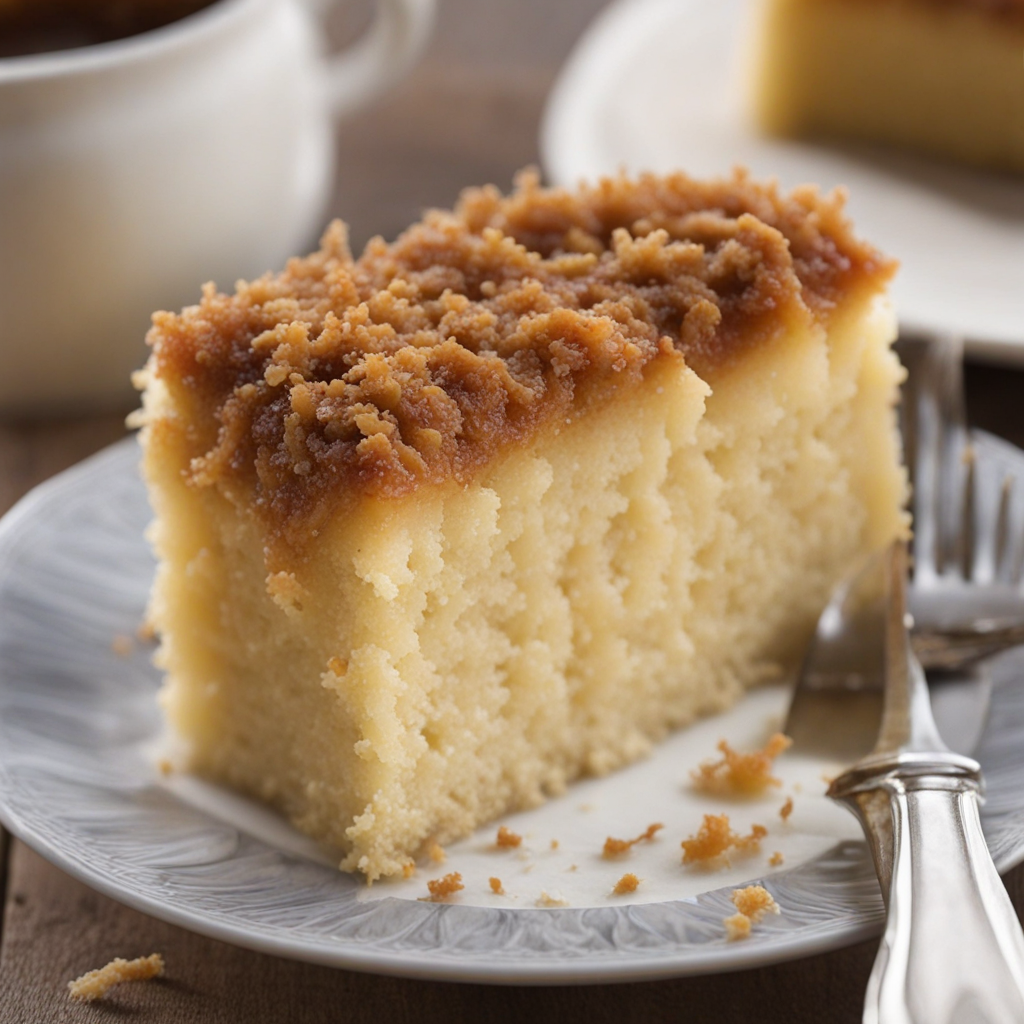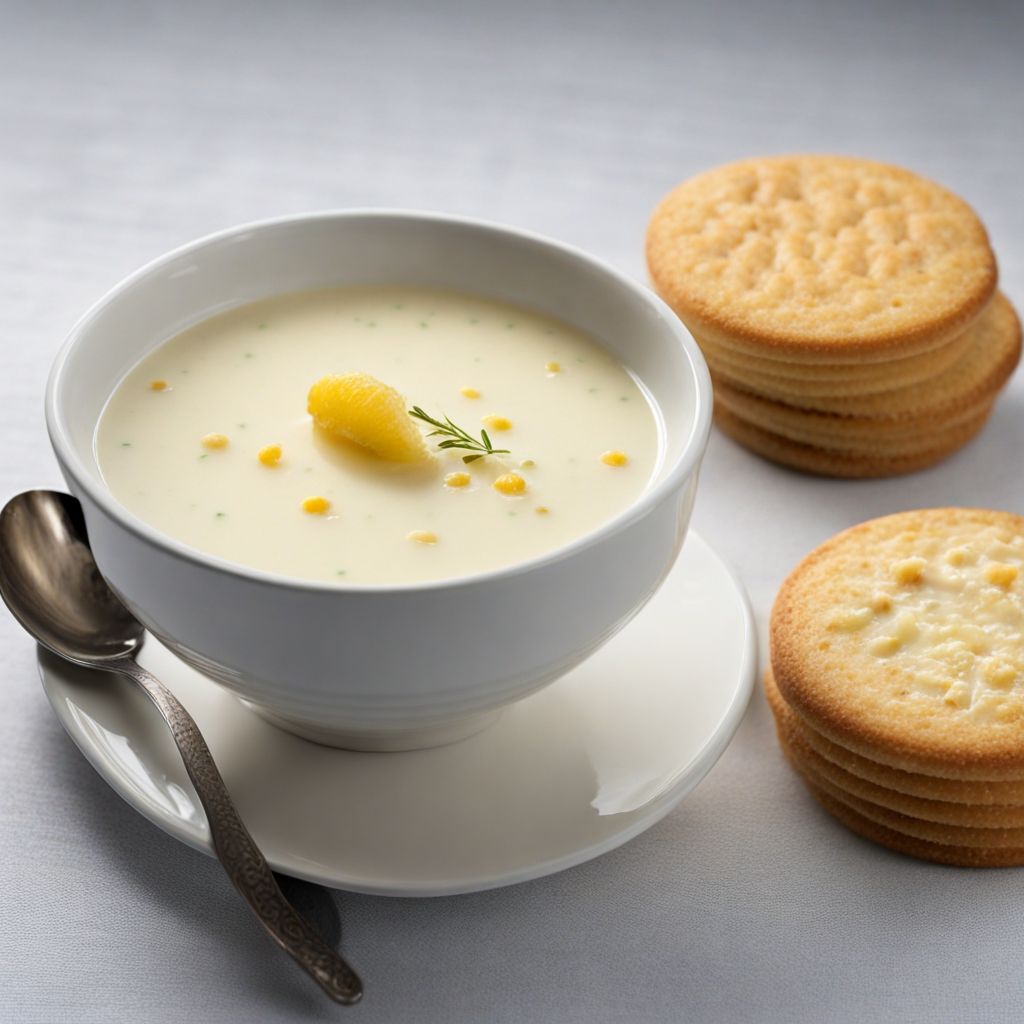Hakkebøf med Bløde Løg
Hakkebøf med Bløde Løg is a traditional Danish dish that embodies the comforting flavors of home-cooked meals. At its core, this dish features a juicy ground beef patty, seasoned simply yet effectively, allowing the rich flavor of the meat to shine through. The patties are typically pan-fried to achieve a delightful crust while keeping the inside tender and succulent. This straightforward preparation highlights the quality of the ingredients, making it a favorite among locals and visitors alike. What truly elevates Hakkebøf med Bløde Løg is the accompanying 'bløde løg' or soft onions. The onions are slowly caramelized until they become sweet and golden, creating a rich, savory topping that complements the beef perfectly. As the onions cook, they release their natural sugars, enhancing the overall flavor profile of the dish. The combination of the savory beef and the sweet, tender onions creates a harmonious balance that is both satisfying and comforting. Traditionally served with a side of creamy mashed potatoes and perhaps some pickled cucumbers, Hakkebøf med Bløde Løg is a meal that evokes a sense of nostalgia and warmth. Each bite transports you to a Danish kitchen, where wholesome ingredients and simple preparations take center stage. This dish represents the essence of Danish cuisine, where quality and flavor come first, making it a must-try for anyone looking to explore new culinary horizons.
How It Became This Dish
A Culinary Journey Through Hakkebøf med Bløde Løg: Denmark's Comfort Food Hakkebøf med Bløde Løg, a beloved Danish dish, translates to "minced beef with soft onions." This simple yet hearty meal encapsulates the essence of traditional Danish cuisine, marrying the flavors of well-seasoned ground beef with the sweetness of slowly caramelized onions. To understand its significance, we must delve into its origins, cultural context, and evolution over the years. Origins of Hakkebøf The roots of Hakkebøf can be traced back to the late Middle Ages when the concept of mincing meat became more prevalent in Europe. This period saw a rise in the popularity of beef as a staple protein, particularly in Northern Europe. The practice of mincing meat allowed for greater versatility in cooking, making it more accessible to different social classes. In Denmark, the dish emerged as a practical solution for utilizing tougher cuts of meat, which could be transformed into tender, flavorful patties. The Danish word "hakkebøf" comes from "hakkebøf," meaning "chopped beef." This preparation method can be likened to preparing hamburgers, but with a distinctively Nordic twist. While the dish shares similarities with the German "Frikadelle" and the Swedish "Köttbullar," Hakkebøf has its own unique identity, deeply embedded in Danish culture. Cultural Significance Hakkebøf med Bløde Løg is more than just a meal; it is a symbol of Danish comfort food. For many Danes, this dish evokes memories of family gatherings, Sunday dinners, and cozy weeknight meals. It is often served with traditional sides such as potatoes, gravy, and pickled beets, creating a balanced and satisfying plate that showcases the simplicity and heartiness of Danish culinary traditions. The dish embodies the Danish concept of "hygge," which translates to a feeling of coziness and contentment. Hygge is a fundamental aspect of Danish life, and food plays a significant role in creating this atmosphere. Hakkebøf med Bløde Løg is often a centerpiece for casual gatherings, where the focus is on enjoying good company and simple pleasures. Development Over Time As Denmark evolved through the centuries, so too did its cuisine. By the 19th century, industrialization led to major changes in food production and consumption patterns. Meat became more accessible to the working class, and Hakkebøf began to gain popularity in households across the nation. The dish was often featured in cookbooks, becoming a staple in Danish kitchens. During the 20th century, Hakkebøf med Bløde Løg became synonymous with Danish home cooking. It was a dish that required minimal ingredients yet delivered maximum flavor, making it a practical choice for families. The recipe was passed down through generations, adapting slightly to individual tastes while maintaining its core elements. In the post-World War II era, the dish saw a resurgence as Danish society embraced a new wave of modernism. The focus on local, seasonal ingredients became prominent, leading to a renewed appreciation for traditional dishes. Hakkebøf med Bløde Løg found its way into restaurants, elevating it from a humble home-cooked meal to a dish featured on menus across Denmark. Ingredients and Preparation The beauty of Hakkebøf lies in its simplicity. The primary ingredient is minced beef, typically derived from well-marbled cuts to ensure flavor and juiciness. The beef is seasoned with salt and pepper, and sometimes mixed with breadcrumbs or eggs to bind the mixture, although many traditional recipes keep it quite straightforward. The onions are a crucial component, often sliced thin and cooked slowly in butter until they become soft, golden, and sweet. This caramelization process enhances the dish's flavor, creating a delicious contrast to the savory beef. The combination of the two elements is what truly makes Hakkebøf med Bløde Løg special. The dish is typically served with boiled or mashed potatoes, a rich brown gravy, and perhaps a side of pickled vegetables. The combination of flavors and textures creates a well-rounded meal that satisfies the palate while offering a taste of Danish culture. Modern Interpretations In recent years, the culinary landscape in Denmark has undergone a transformation, driven by the New Nordic cuisine movement. Chefs are exploring traditional dishes with a contemporary flair, often using innovative techniques and local ingredients to re-imagine classic recipes. Hakkebøf med Bløde Løg has not escaped this trend, with modern interpretations appearing in gourmet restaurants, where chefs experiment with different cuts of meat, cooking methods, and accompaniments. Some chefs have begun to incorporate unusual spices or ingredients, adding a twist to the traditional recipe while still respecting its roots. Others have focused on sustainability, sourcing their beef from local farms and emphasizing organic produce. These modern adaptations allow Hakkebøf to evolve while still remaining a comfort food that resonates with many. Conclusion Hakkebøf med Bløde Løg is not merely a dish; it is a narrative woven into the fabric of Danish society. Its origins reflect a time when practicality was essential, and its evolution showcases the resilience and adaptability of Danish cuisine. It is a dish that embodies the spirit of hygge, inviting people to gather, share stories, and savor the simple joys of life. As Denmark continues to embrace its culinary heritage while looking towards the future, Hakkebøf med Bløde Løg remains a cherished symbol of tradition, comfort, and community. Whether enjoyed in a cozy home or a trendy restaurant, it stands as a testament to the enduring power of food to connect us across generations and cultures.
You may like
Discover local flavors from Denmark


